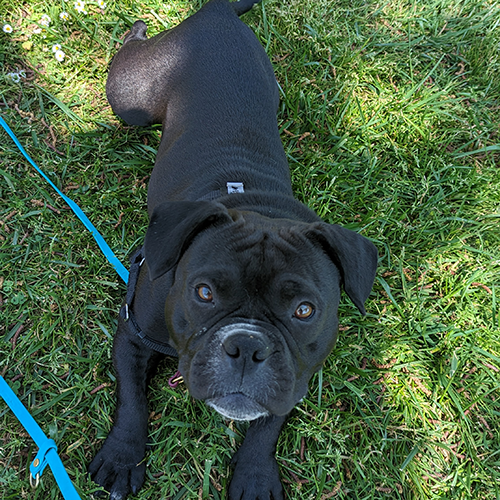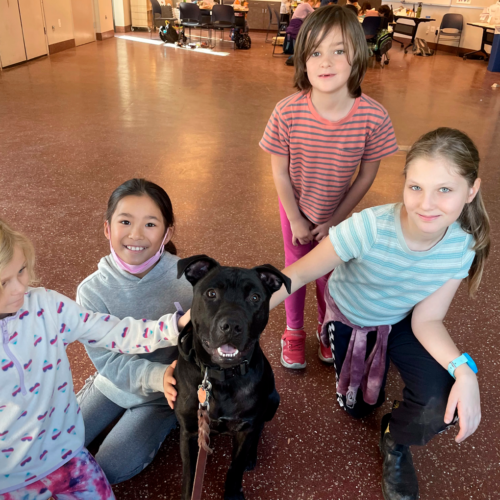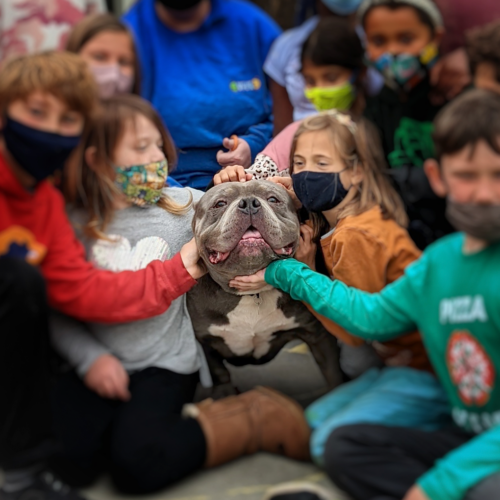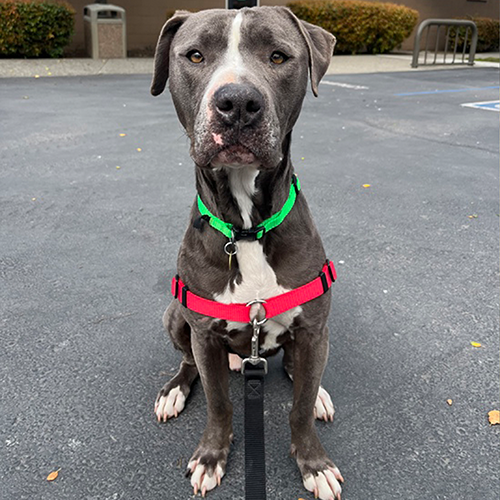An Underdog Story: The Unstoppable Spirit of Pit Bull Mixes
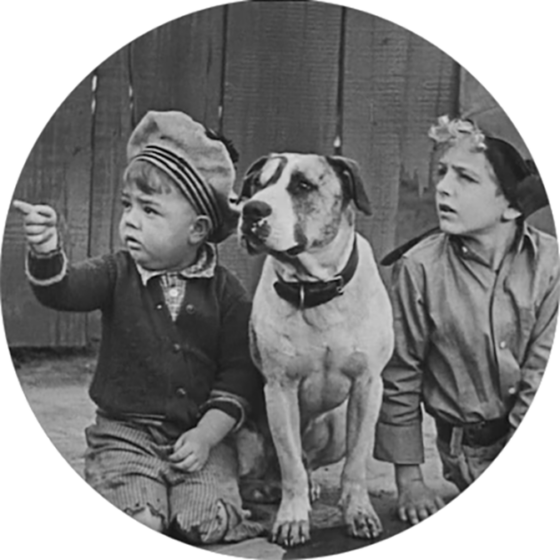
Where the Tail Begins
There was a time when pit bulls were among the most beloved dogs in the country! In the early- to mid-1900s, the most famous dog in films was Pal, who starred in over 200 movies. Despite their overwhelmingly social and sweet nature, in the 1970s and 1980s, pit bulls became associated heavily with dog fighting, leading to a reversal for this once beloved group of dogs.
East Bay SPCA was founded in 1874, making it as old as the pit bull! As an organization, we are in a position not only to get to know hundreds of pit bulls who pass through the shelter. The benefit of this population-level perspective is we see that no two pit bulls are the same, they are all individuals with their own personalities. We have countless examples of pitties who have touched the hearts of our volunteers and staff over the years.
Here are a few of our favorite stories:
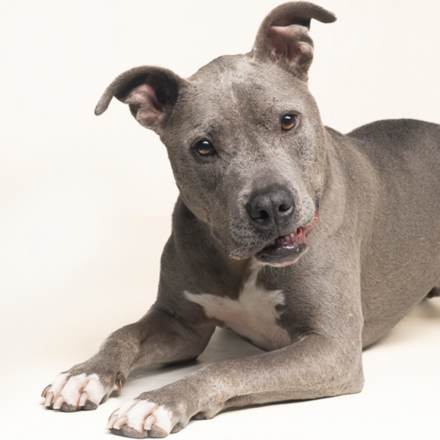
Our shelter has known Lola for most of her life! She came into the shelter with the worst case of demodex (a normally mild and treatable skin mite) that our shelter med team had ever seen. It took weeks of careful treatment and coordination with our foster team for her to recover.
Lola was adopted but was returned 6 years later due to the adopters’ changing life circumstances. When Amber, our current Dublin Shelter Manager (and former shelter med team member) recognized her, she couldn’t believe it was the puppy she remembered. “I broke down and cried in her habitat.” After hearing stories about Lola’s miraculous recovery and sweet disposition, Amber’s father Steven decided to visit, fell in love, and adopted her. She is now living her best life with their family! “She’s queen of my dad’s heart,” says Amber. “He made a shirt with her face on it and is now a staunch pit bull advocate.”
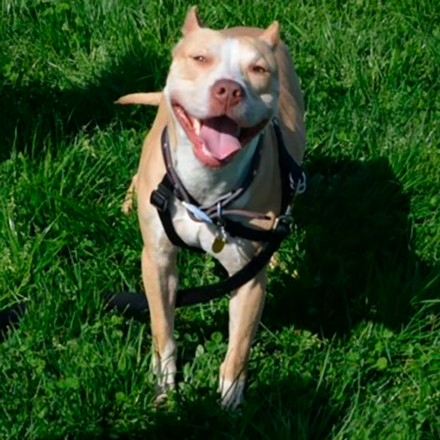
Not all pit bulls come to our shelter as outgoing and social. One of our Behavior & Training department’s most memorable cases was a dog named Fawn, who was so scared of the world that she would refuse to leave her bed. Our behavior team worked to improve her confidence, but worried we would have a difficult time finding a family dedicated to helping her continue to make progress.
That’s when Debbie and her teenage daughter Sabrina showed up. “They were looking for a female pit bull, and she was the only one available at that time,” recalls Micah McKechnie, then Animal Care Coordinator. “When we explained her behavior needs, Sabrina turned to her mom and said, ‘this is my dog.’ It was an instant connection.” After receiving counseling from the B&T team for how best to continue her training, Fawn went home that day. Several weeks later, the team got an update. Not only was Fawn thriving in her new family, but she had made all sorts of new friends. “It was such a great moment,” says Chris Money, Behavior & Training Associate. “She is how we hope all of our shy dog cases turn out.”
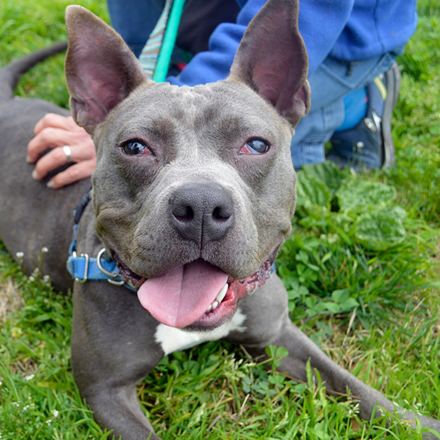
Because of their history being used in dog fighting, many assume that pit bulls are not dog friendly. The perfect example of a pit bull overcoming this stigma in the shelter was Kara. Kara came to us with such a severe skin infection we thought she had been hit by a car! After receiving treatment, she was having trouble coping with the shelter stress, and our Shelter Operations team was looking for ways to meet her energy needs. We had recently instituted a dog playgroup program, but Kara would become concerningly still around other dogs, so much so that staff worried about what her intentions were. She appeared to want to interact, but not being able to effectively read her body language, staff worried about what might happen.
Finally, they decided on a low-contact barrier meet to test the waters. And Kara blossomed into one of the organization’s most well-remembered playgroup rock stars. From that day on, she participated in multiple weekly playgroups and was adopted by a home with a resident Great Dane! Kara’s play drive was more than equal to her new big brother’s size, and their follow up photos make us smile to this day.
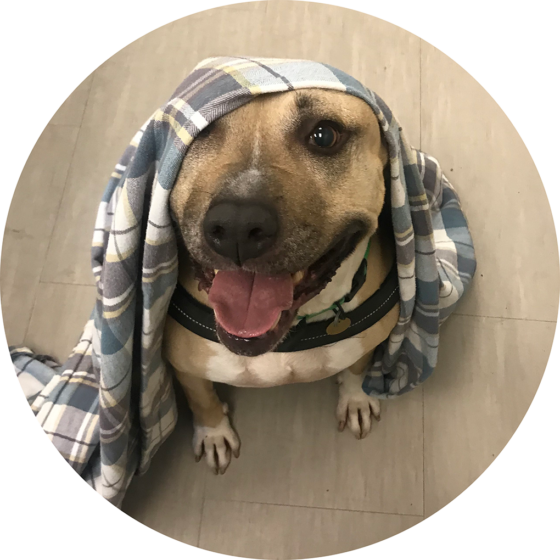
Youth Programs
So many pit bulls are on our Youth Programs (aka Humane Education or HE) historic “gold star” program dog list. Not all dogs are comfortable with children, let alone a whole classroom or birthday party! Yet, our HE staff named pit after pit who just couldn’t get enough of our children’s programs. Romeo, Krypto, Rex, Baby Bee, and of course our staff wonder dog Lola—there were far too many to include here! But one that stuck out for both our Humane Education staff and our behavior team was Baby Angel. This sweet girl had a longer than normal shelter stay, and our Behavior & Training team was working hard to help her lower her stress levels. When HE took her to a classroom for the first time, we saw that being around kids had a powerful effect on her mood. Working with our children’s camps and school programs helped keep her level in the shelter, right up until she was adopted into a loving home.
East Bay SPCA is committed to educating our adopters and our community about these special pups, and how every adopter and pit bull guardian can work to meet the individual needs of their companion. From training in our classrooms, to medical care and low cost spay/neuter services at our clinics, to feeding and care through our pet food pantry, our More Than a Shelter 2027 initiative works to support dogs of all breeds, in our community and beyond.
If you want a deeper dive into the history, politics, social conventions, and paradigm shifts surrounding these iconic dogs, we recommend the 2016 book “Pit Bull: The battle over an American icon” by Bronwen Dickey.
Fun Fact:
The term pit bull itself is not a breed, but an umbrella term coined in the 1870s when English Bulldogs were first crossed with black & tan terriers and brought to the United States from Britain. There are 4 breeds most associated with the pit bull moniker: American Staffordshire Terrier, British Staffordshire Terrier, the American Bully (in 3 sizes), and the American Pit Bull Terrier.

